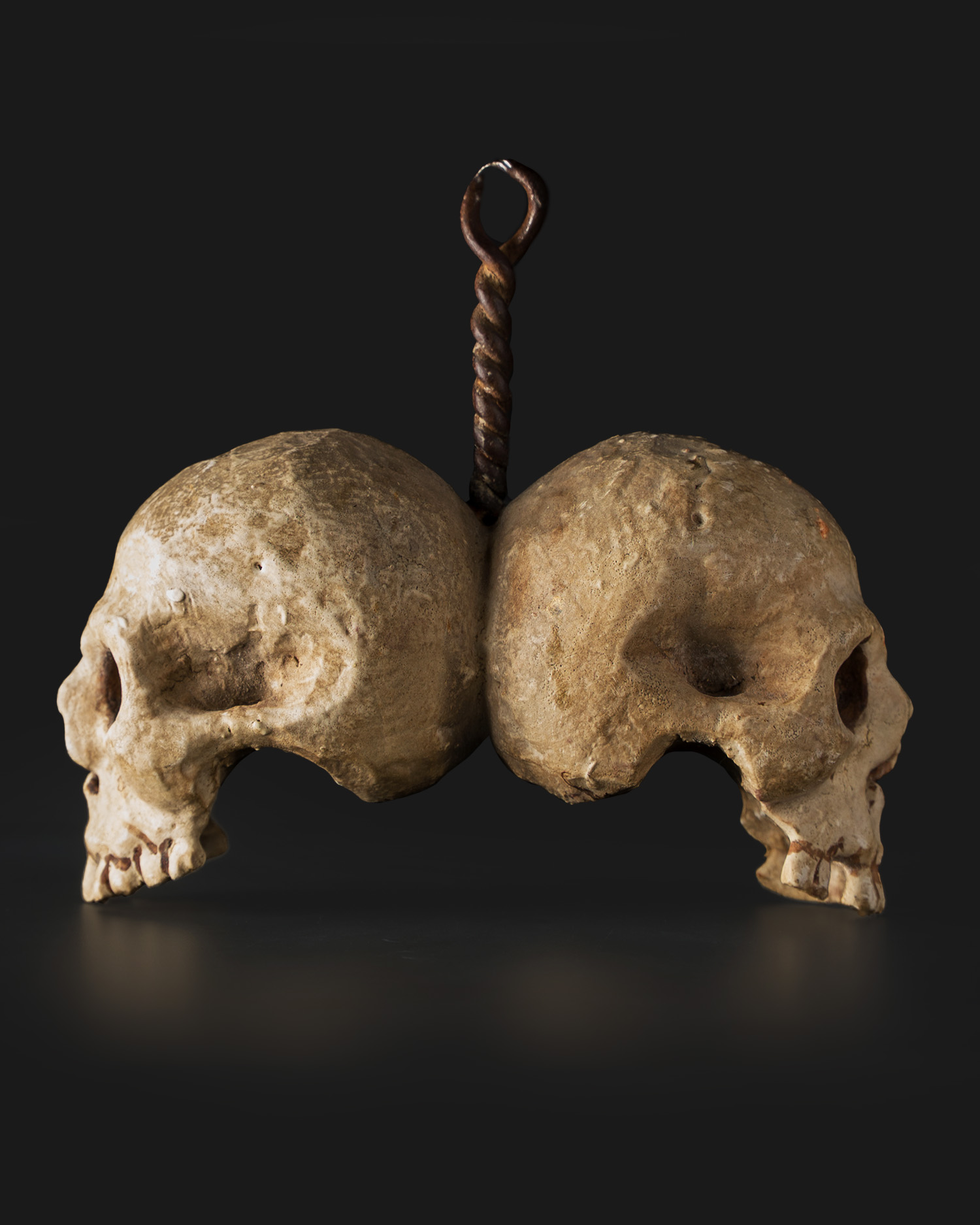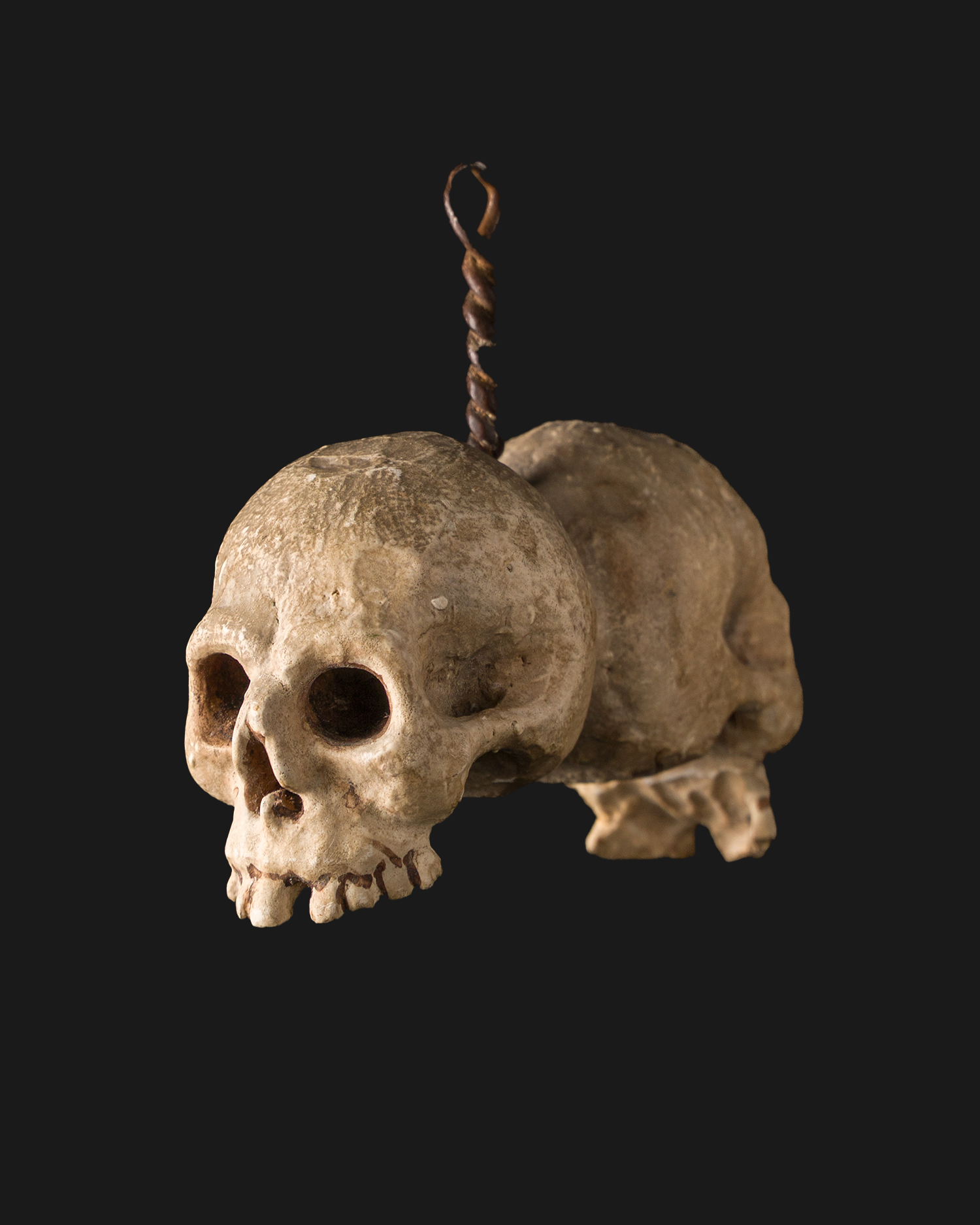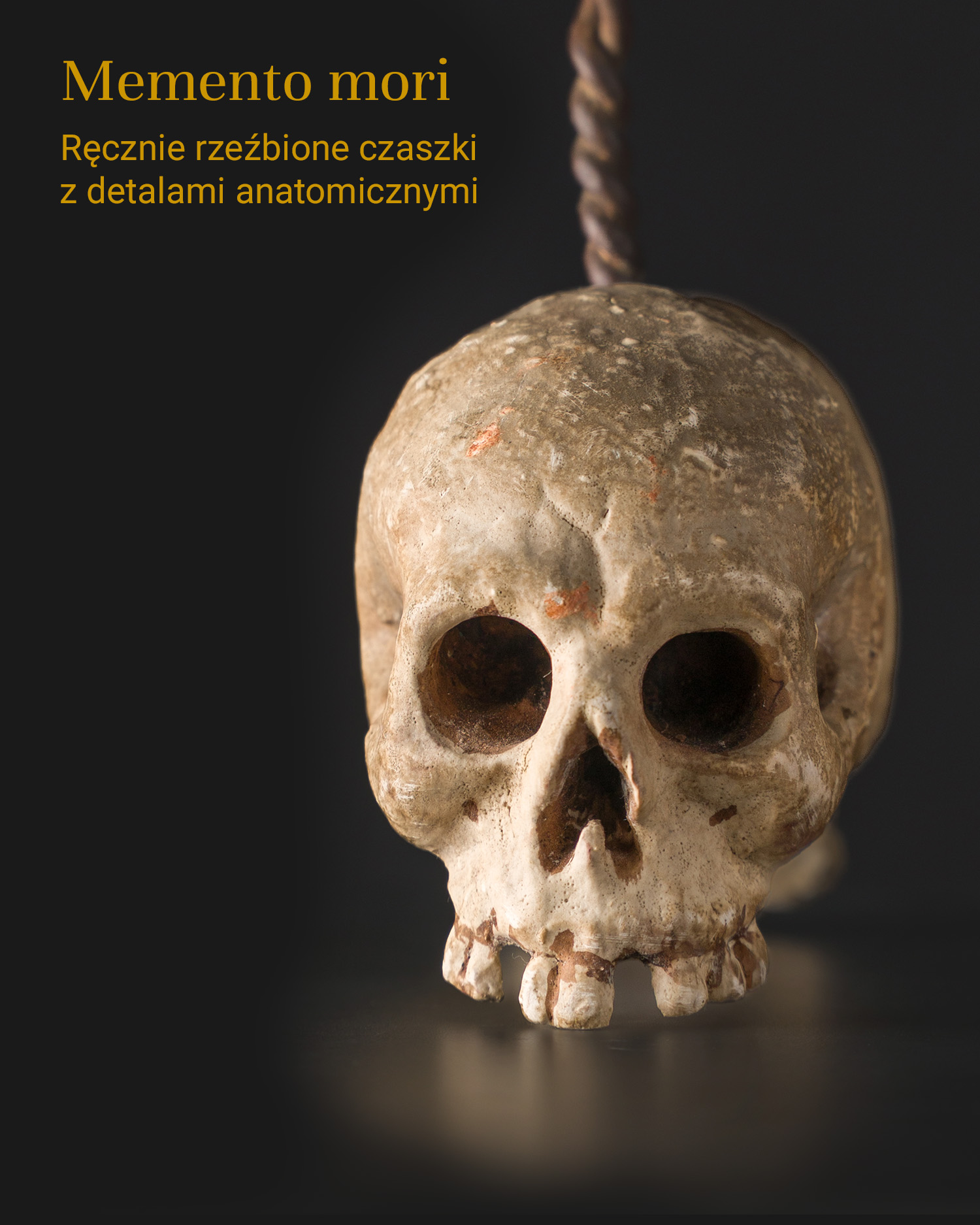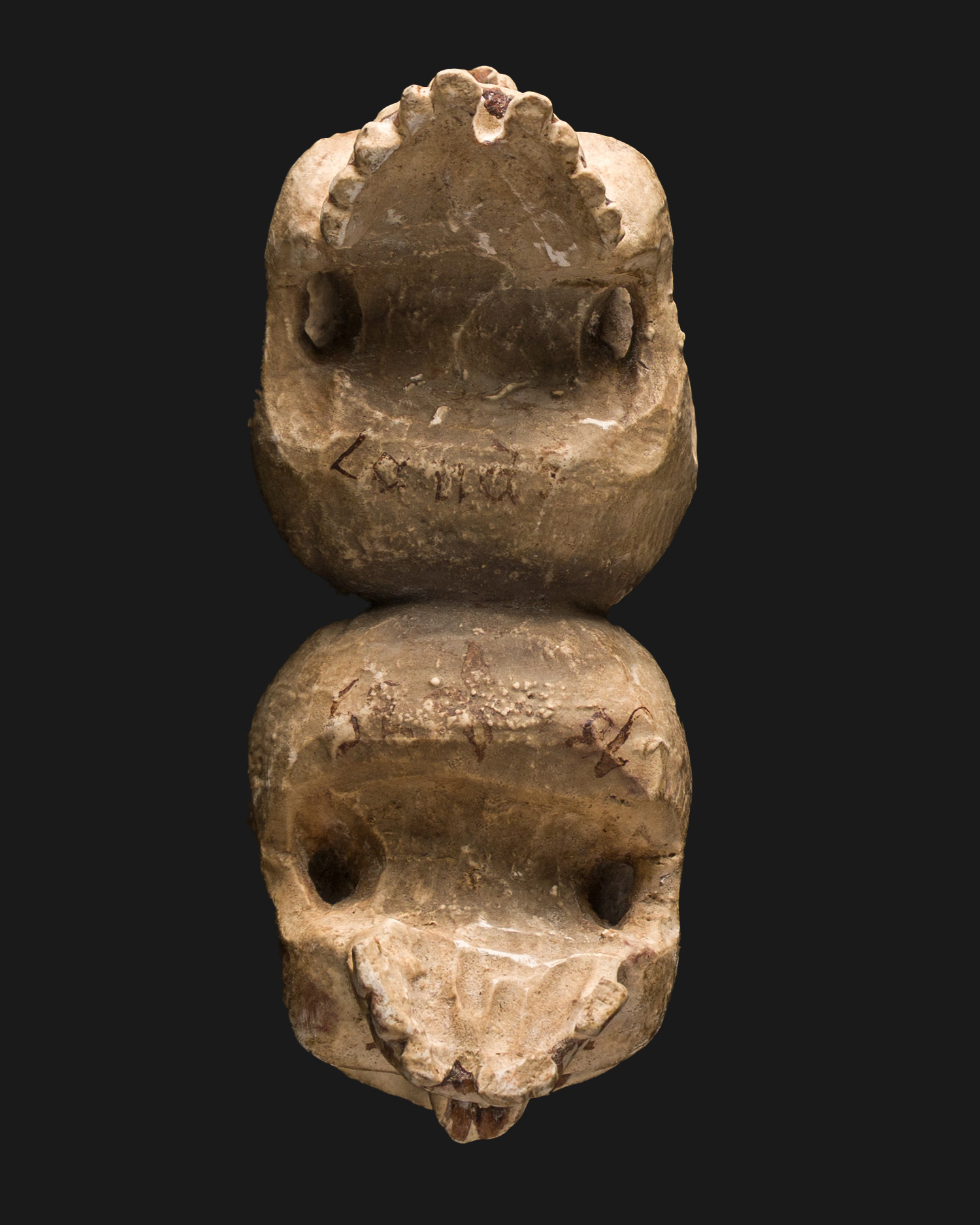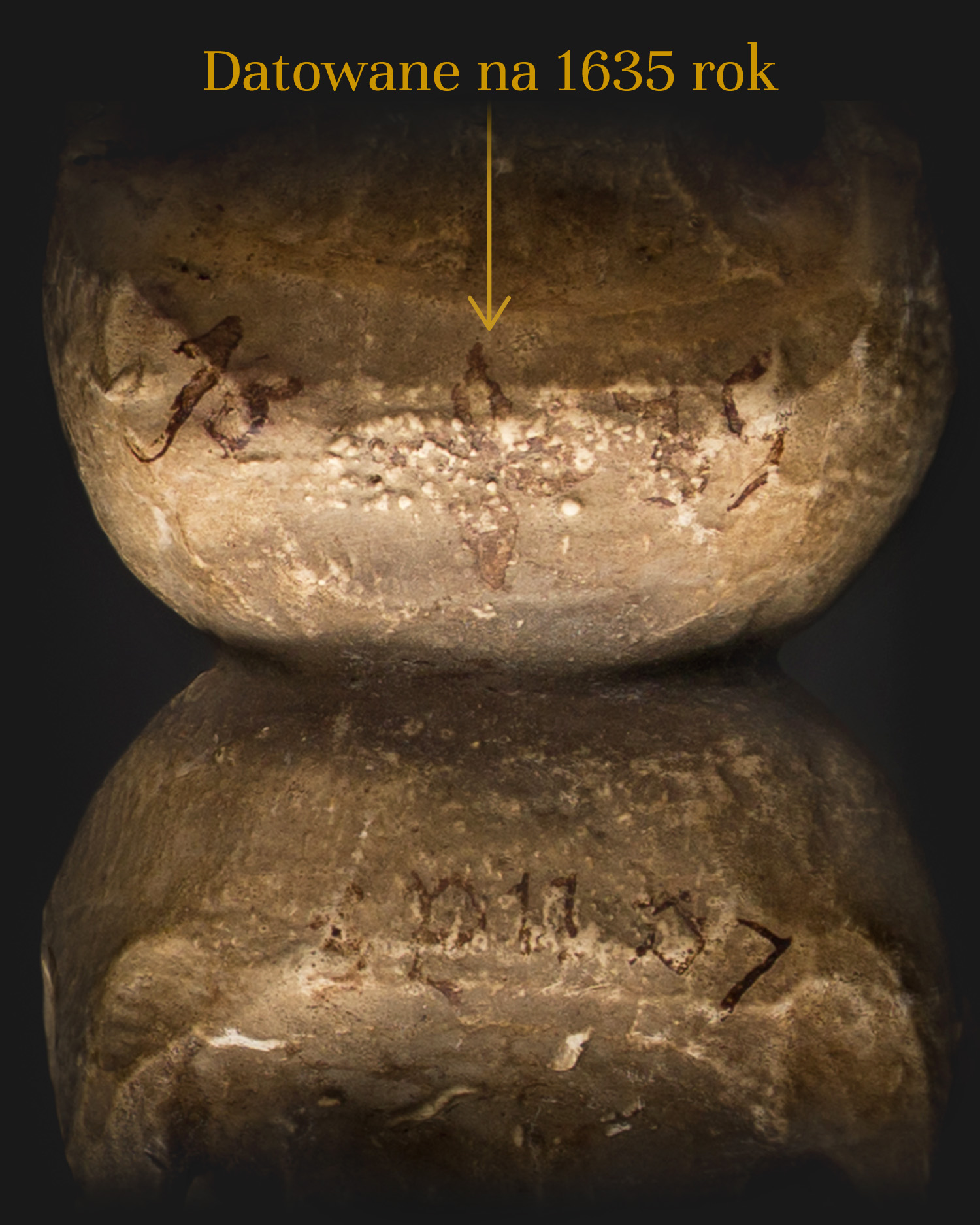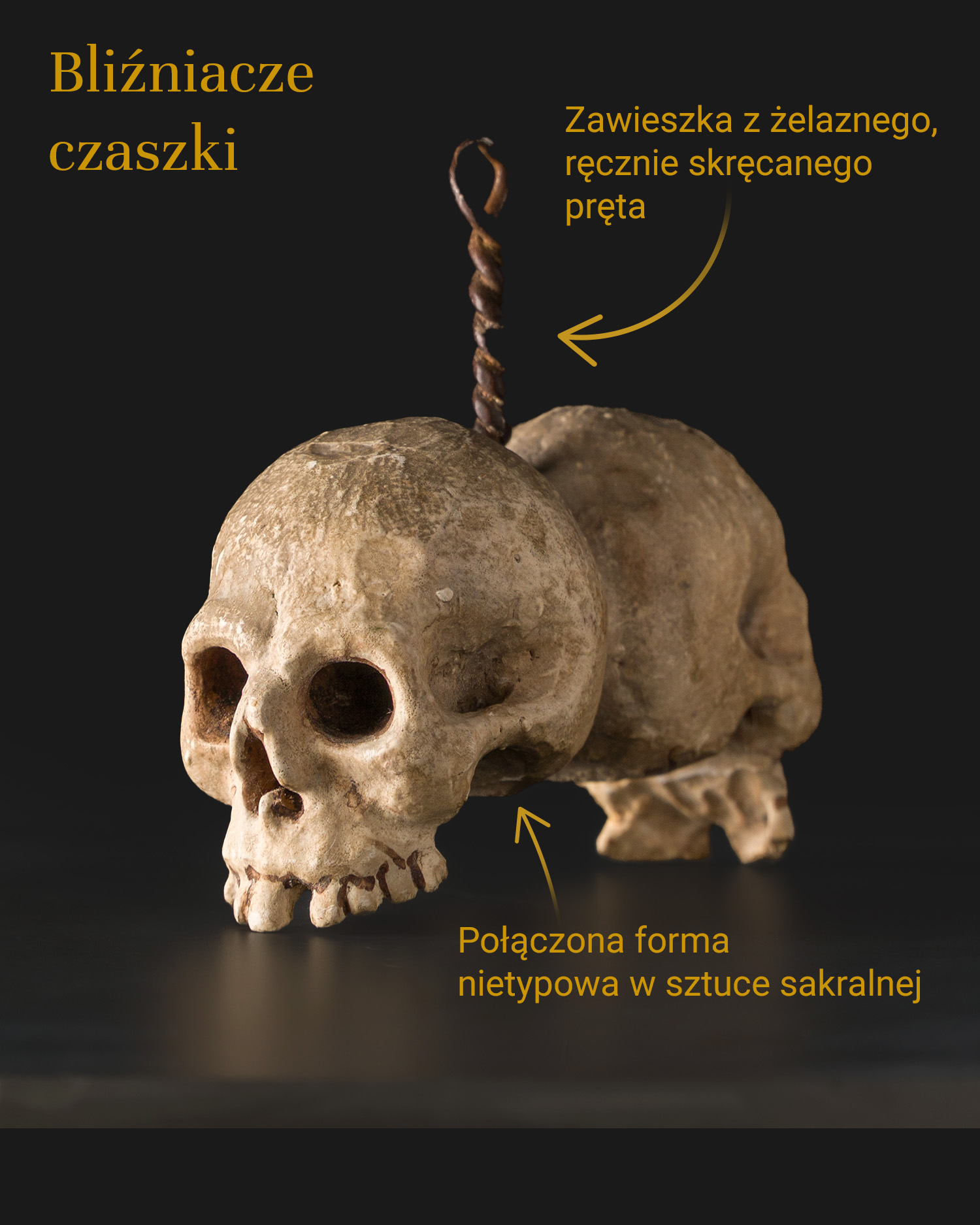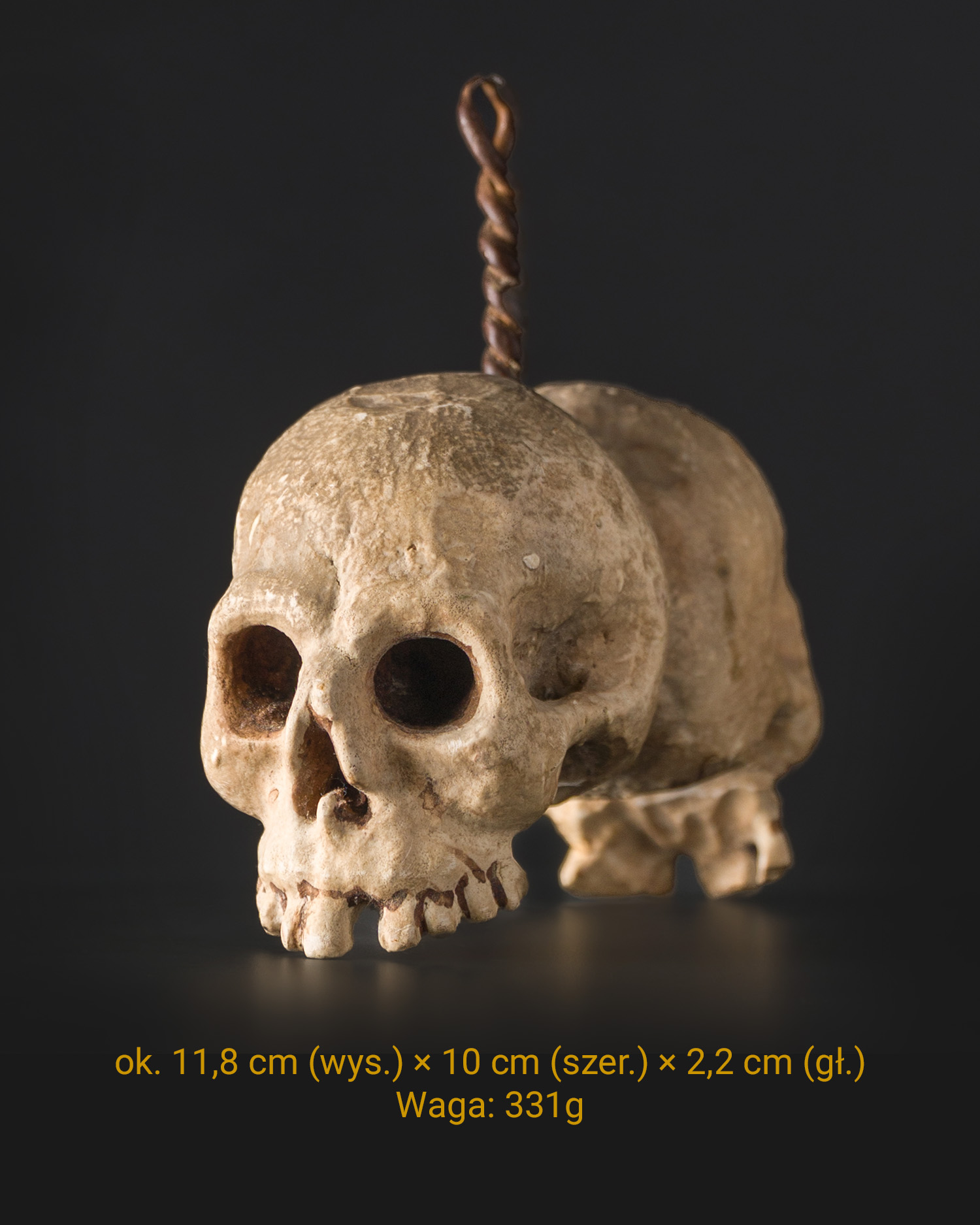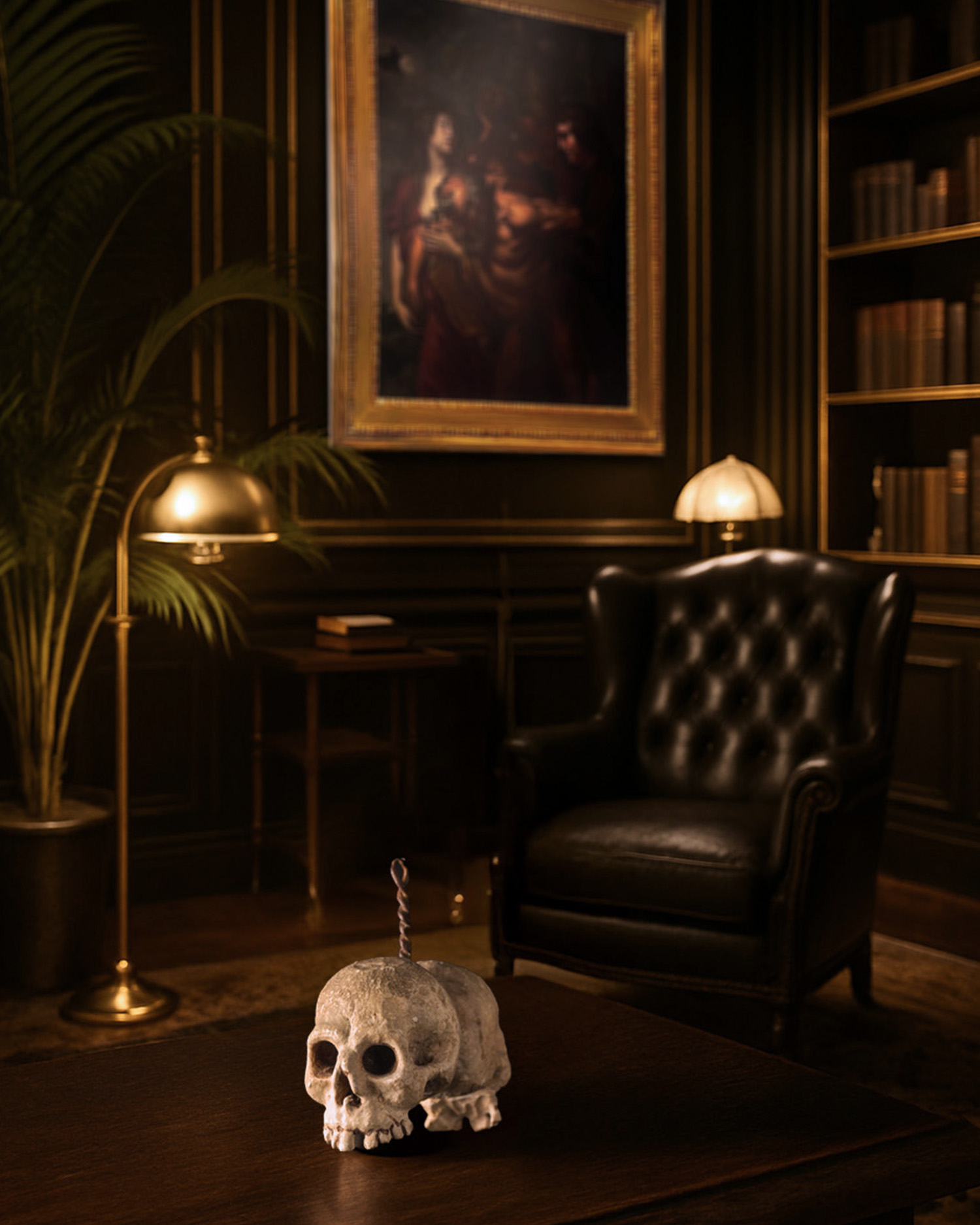Two Connected Wooden Skulls with a Hanger, 1635
875,00 €
A unique item in the form of a pair of connected wooden skulls, most likely serving a symbolic function (memento mori). Sculpture made of wood covered with white and brown paint; designed for hanging – with a hanger made of braided, forged iron rod. On the underside, the date “1635” and a faintly legible creator’s signature – “Lond” (?) F(ecit). Visible signs of age, wear on the iron loop, patina. High quality carving with anatomical details, including realistically rendered eye sockets, teeth, and cranial sutures.
1 in stock

Symbolism
The 1635 wooden twin skulls represent memento mori iconography, reminding us of the fragility of life and the inevitability of death. The iron pendant suggests that the object served as an object of contemplation or penitential decoration in a monastery or hermitage. The combination of two skulls may symbolize the duality of soul and body, the struggle between spirit and matter, or a shared twin death.
Historical context
The object was built in the 17th century, at a time of intense spiritual movements in Europe, when the symbolism of death was an important element of religious reflection. Memento mori functioned as a spiritual warning, especially popular in monastic and ascetic circles. In southern Germany, the penitential and contemplative tradition manifested itself in a strong iconography of death.
Collector's value
This is a unique example of memento mori sculpture, rarely found on the antiquarian market. It has collector value due to its age (1635), twin form, anatomical detail, and historical use. It may be a sought-after exhibit among collectors of sacred art, curios from the Baroque era, and esoteric props.
Aesthetic qualities
The anatomical precision of the eye sockets, teeth and cranial fissures testifies to the high level of sculptural workmanship, despite the rustic form. The natural patina, the contrast of light wood and dark iron, and the unusual arrangement of the "connected skulls" are eye-catching and make the object particularly visually interesting.


Application
It can function as an exhibit in a gallery of curiosities, a theatrical or photographic prop, a decorative object in a contemplative or artistic space. It will also work well as part of a museum exhibition devoted to the Baroque, asceticism or sepulchral art.
Memento mori in "twin" version
In Baroque iconography, the combination of two skulls in one form is an extremely rare phenomenon. This type of representation may have symbolized the spiritual unity of two people - such as deceased monks, penitents or friars - or the metaphysical juxtaposition of life and death. In the context of penance and contemplation, it was a powerful visual tool to appeal not to reason, but to the conscience.
| Weight | 0,3 kg |
|---|---|
| Dimensions | 11,8 × 10 × 2,2 cm |
| Type |
Sacred Sculpture / Symbolic Object |
| Form |
Twin form of two connected skulls with a hanger |
| Materiał |
Iron ,Wood |
| Kolorystyka |
Dark metal ,White-Gray |
| Technika |
Hand carving ,Hand-forged iron ,Natural patination |
| Czas powstania |
1635 ,Date in situ |
| Era |
Baroque |
| Style |
Rustic Sacred Realism ,Memento mori |
| Kraj pochodzenia |
Germany |
| Autor |
Unknown |
| State of preservation |
Very good – natural patina, preserved anatomical elements, no mechanical damage |

